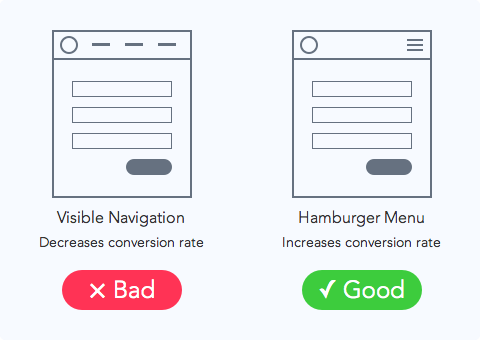Explore the role of QA in ensuring a seamless and user-friendly experience for software users.
In our fast-paced digital world, where user interfaces are a critical bridge between businesses and consumers, the significance of user experience
BLOGS
- Posted 1 month ago


By Sanjana (QA Engineer)
- 1 month ago
User Experience (UX) Testing
In our fast-paced digital world, where user interfaces are a critical bridge between businesses and consumers, the significance of user experience (UX) cannot be overstated. It’s not just about aesthetics; it’s about creating interfaces that users find intuitive, efficient, and enjoyable. Enter UX testing, a process that stands as the cornerstone of user-centered design. In this blog post, we will delve into the world of UX testing, exploring its vital role in shaping exceptional user experiences and ensuring the success of digital products and websites.
Understanding UX Testing
Why is UX testing so important?
Evaluating user experience through testing is a vital aspect of product design, ensuring it aligns with users’ needs and delivers a positive interaction. The significance of UX testing is intricately connected to the inherent value of a seamless user experience. Here’s why UX testing matters:
- Deeper User Understanding: UX testing provides profound insights into your target audience, illuminating their behaviors and expectations when engaging with your product or service.
- Functional Designs: It verifies that your designs operate as intended, fulfilling the requirements of your customers and end users effectively.
- Early Problem Identification: By detecting UX issues promptly, it saves time, money, and safeguards brand reputation by addressing problems before they escalate.
- Continuous Improvement: UX testing pinpoints areas for enhancement and innovation. This continual refinement allows your product to evolve, addressing market gaps and staying competitive.
- Enhanced User Experience: Ultimately, UX testing refines the user experience. Positive UX boosts customer loyalty, fosters brand reputation, increases conversion rates, sales, and revenue, ensuring your brand remains competitive.
- Prevent Critical Failures It includes the evaluation of testing edge cases, ensures the robustness of a product by identifying and addressing potential failures, optimizing performance, enhancing accessibility, and building user trust, leading to a more comprehensive and inclusive user experience.
For instance, a user will have a more minimalistic andWhy is UX testing so important? positive experience in the UI with a hamburger menu while viewing the website on their phone. A hamburger menu reduces unnecessary clutter and provides a neat page.

The Role of Testing Edge Cases
Testing edge cases involves exploring scenarios at the limits of a system’s functionality. By examining these extremes, businesses ensure their products are robust and can handle unexpected user interactions effectively.So Delving into edge cases ensures products are not just user-friendly under standard conditions but also under unusual or extreme circumstances. This meticulous testing guarantees accessibility, reliability, and user trust, even in unconventional situations.
For eg :Consider a website experiencing high traffic, a mobile app functioning on low battery, or a form being submitted with unconventional data. Testing these edge cases can reveal vulnerabilities and opportunities for improvement.
UX Testing Best Practices
- Incorporating User Research:Combining UX testing with user research provides a comprehensive view of user needs and behaviors, guiding product development effectively.
- Usability Metrics:Utilizing metrics like task success rate, error rate, and user satisfaction scores quantifies the effectiveness of UX testing efforts, enabling data-driven decisions.
- Iterative Testing:Regular and iterative testing, coupled with continuous feedback loops, ensures that products evolve alongside user needs, maintaining a high standard of UX.
- Collaboration: Effective communication and collaboration between designers, developers, and testers are vital. By working as a cohesive team, businesses can harness the collective expertise to enhance UX continually.
How to perform User Experience Tests
The approach to conducting user experience tests varies based on the specific product and the type of testing required. For a complex application, a substantial number of users might be necessary for in-depth reviews and testing. However, in general, a significant user sample can provide statistically relevant data and cover a major portion of testing objectives.
However , let’s explore some methods of conducting user experience testing:
- Laboratory Testing: In this method, a group of participants is recruited to evaluate the application. They are seated in a spacious room, maintaining a suitable distance from the observer. After using the application, they are asked specific questions, and the survey results are analyzed to gauge user experience.
- Testing with Random Users: Setting up a large laboratory isn't always essential. Testing can be conducted in public places like coffee shops or grocery stores, where individuals are approached to review the product. Surveying them with targeted questions provides valuable insights. This approach is often referred to as Guerilla usability testing.
- Remote Testing for Web ApplicationsThis method allows participants to test the web application remotely, eliminating the need for physical presence during the testing phase. Participants can engage with the product at their convenience, enabling testing to be carried out at any time.
- Functional Designs: It verifies that your designs operate as intended, fulfilling the requirements of your customers and end users effectively.
- Functional Designs: It verifies that your designs operate as intended, fulfilling the requirements of your customers and end users effectively.
The choice of method depends on the product’s complexity and the specific goals of the testing process. Each approach offers unique advantages and can yield valuable user feedback to enhance the overall user experience.
Conclusion
In essence, UX testing is not just a checkbox in the development process; it’s a fundamental driver of success. By understanding users, addressing their needs, and embracing testing edge cases, businesses can create digital experiences that leave a lasting impression. It’s not just about flawless interfaces; it’s about building relationships with users, earning their trust, and ensuring they keep coming back. So, let’s champion the cause of UX testing, making the digital world a more user-friendly and engaging place for all.




